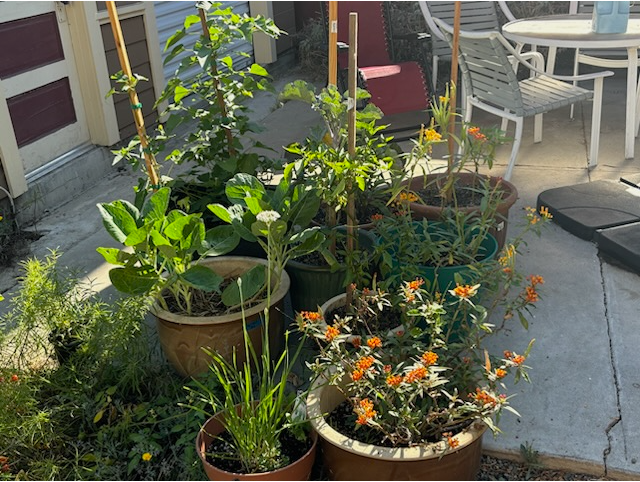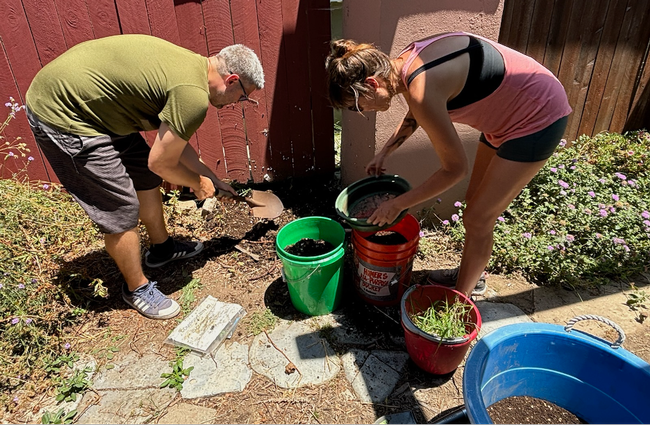Growing Food, Community, and Native Plants in Residential Spaces: Part 2
In Part 2 of this blog, we continue to explore some of the environmental challenges associated with growing food in urban spaces as well as some of the benefits that micro-community gardens have to offer.
Andrea's Micro-Community Garden
As exemplified by Andrea's residential, micro-community garden, smaller gardens may still face challenges common to growing food in urban spaces, such as soil contamination (e.g., due to lead paint or prior industrial uses), infrastructure needs (e.g., access to water, restrooms, communal spaces), and continual needs for soil, compost, and fertilizer.
Testing the Soil
Andrea tested her soil prior to growing food crops. Due to the concentrations of lead in the soil, she decided to grow the majority food in raised beds and pots, rather than directly in the ground. She has been planting rose scented geranium, which have the potential for lead bioremediation.
Building Soil and Compost
Andrea collects food scraps, rabbit droppings, and other green waste from community members for her compost bin. She has 8 to 10 households participating. To educate herself and in turn educate her neighbors (who have open access to drop off food waste), Andrea completed the Long Beach Compost and Recycling Ambassadors program. Inviting her neighbors to drop off food scraps provides compost for the garden, mitigates costs of having to purchase high quality soil, provides a temporary solution to inadequate municipal composting infrastructure, and helps divert food waste from the landfill.
Supporting Local Biodiversity
Cultivating native plant species near gardens helps support ecological health and local biodiversity, including insects which pollinate crops and control pests. Andrea planted a variety of native plants in her front yard as well as in the ground around the garden. She shared her observations of the native plants supporting the local biodiversity, stating:
“Just sitting on my porch among the native sunflowers, I saw at least 20 different species in 15 minutes. There were native bees – many types of native bees – there were gold finches, hummingbirds, fig beetles… several butterflies, a new grasshopper I had not seen before… I should have started documenting them using iNaturalist.”
Practicing Sustainability
To help minimize water use, mitigate weeds, and improve soil health, Andrea's garden utilizes mulching. She also stores rain in rain barrels, which she uses to water the fruit trees. No pesticides or herbicides are used in the garden. To help control pests and mildew, the gardeners will use neem oil and sprinkle cayenne pepper.
So far, Andrea and her neighbors have enjoyed the fruits of their labor, harvesting plenty of tomatoes, zucchini, chard, kale, bananas, figs, plums, basil, spaghetti squash, peas, potatoes, pumpkins, peppers, parsley, and more.
If you would like to share your experience with a micro-community garden, please contact Ashley Hooper at asmhoope@ucanr.edu, so that I can learn more from you!




